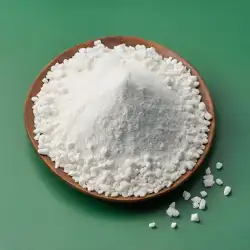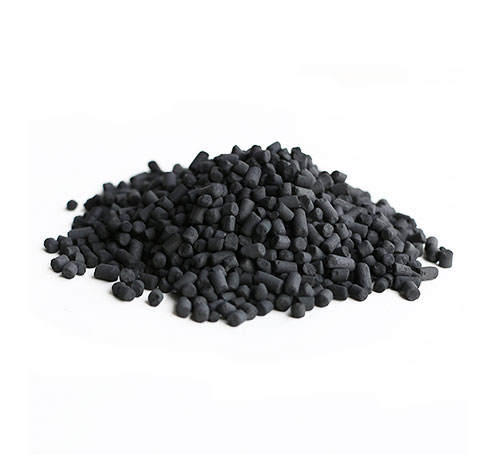Calcined alumina, a versatile and high-performance material, is making waves across various industries due to its unique properties and diverse applications.
In this article, we delve into the world of calcined alumina, exploring its production process, key characteristics, and the vast array of industries where it plays a crucial role.
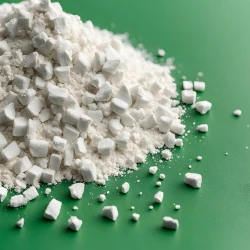
Contents
What we will talk about in this article?
Calcined Alumina
Calcined alumina is a refined form of aluminum oxide (Al2O3) that has undergone a process known as calcination. Calcination involves heating aluminum hydroxide or other aluminum compounds at elevated temperatures, typically exceeding 800 degrees Celsius. This process removes chemically combined water and other volatile substances, resulting in a material with enhanced purity and altered physical properties.

Alumina Calcination Process
The calcination process for alumina involves heating aluminum hydroxide or another aluminum compound to high temperatures to remove water and other volatile substances, resulting in the formation of alumina (aluminum oxide). Here is a general overview of the alumina calcination process:
Raw Material Preparation:
- The process typically starts with the extraction of raw materials containing aluminum, such as bauxite ore.
- Bauxite is a common source of aluminum, and it is usually refined to produce alumina.
Aluminum Hydroxide Precursor:
- The extracted aluminum is often first processed into aluminum hydroxide through various chemical processes.
Calcination:
- The aluminum hydroxide or another aluminum compound is subjected to high temperatures in a kiln or furnace.
- The calcination temperature is usually above 800 degrees Celsius (1472 degrees Fahrenheit).
Removal of Volatile Components:
- During calcination, the primary goal is to remove water and chemically combined water from the aluminum hydroxide.
- Other volatile substances may also be driven off, leaving behind purified alumina.
Formation of Alumina:
- The calcination process transforms the aluminum hydroxide into alumina (aluminum oxide), the final product.
Cooling:
- Once the calcination is complete, the alumina is allowed to cool before further processing.
The overall reaction can be represented as follows, where Al(OH)3 represents aluminum hydroxide:
Al(OH)3→Al2O3+3H2O
In this reaction, water is released, and alumina is formed as the final product.
The specific details of the calcination process can vary depending on factors such as the type of raw material used, the desired properties of the final alumina product, and the intended applications. The controlled conditions during calcination are crucial to achieving the desired purity and characteristics of the calcined alumina.
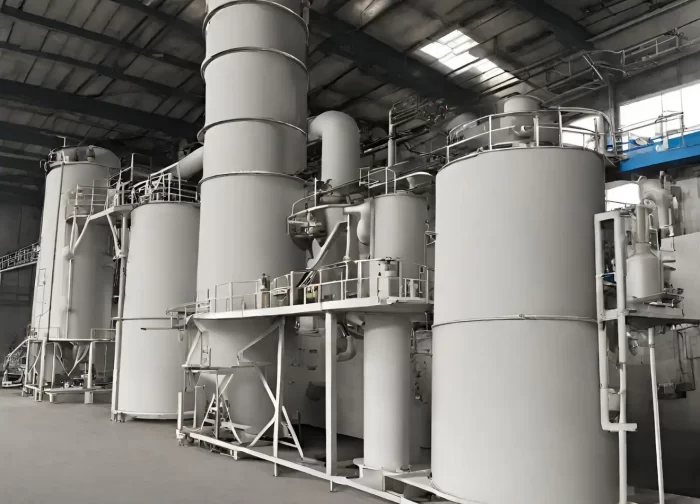
What Is Calcined Alumina Used For?
Calcined alumina is a versatile material with various applications across different industries due to its unique properties. Here are some common uses of calcined alumina:
- Refractories: Calcined alumina is a critical component in the production of refractory materials used in high-temperature applications. It provides thermal stability and resistance to thermal shock, making it ideal for lining kilns, furnaces, and other high-temperature industrial equipment.
- Ceramics: In the ceramics industry, calcined alumina is used to manufacture advanced ceramics. Its high purity, mechanical strength, and resistance to wear contribute to the durability and performance of ceramic products such as cutting tools, insulators, and electronic components.
- Abrasives: Due to its hardness and abrasive properties, calcined alumina is widely used in the manufacturing of grinding wheels, sandpaper, and other abrasive materials. It enhances the efficiency of material removal processes in industries such as metalworking and construction.
- Polishing Compounds: Calcined alumina's polishing capabilities make it valuable in the production of polishing compounds for metals, glass, and ceramics. It is used to achieve precise and smooth surfaces in various applications.
- Electronics: High-purity calcined alumina finds applications in the electronics industry. It is used in the production of insulating components and substrates for electronic devices, providing electrical insulation and thermal management.
- Fillers and Coatings: Calcined alumina is used as a filler or coating in various materials, such as plastics, rubber, and paints, to enhance their mechanical properties, wear resistance, and overall performance.
- Catalyst Supports: In some chemical and petrochemical processes, calcined alumina is used as a catalyst support. Its high surface area and thermal stability make it suitable for catalytic applications.
- Specialized Applications: Calcined alumina may be employed in specialized applications, such as in the production of certain refractory ceramics, catalysts, and specialty materials, depending on its specific properties.
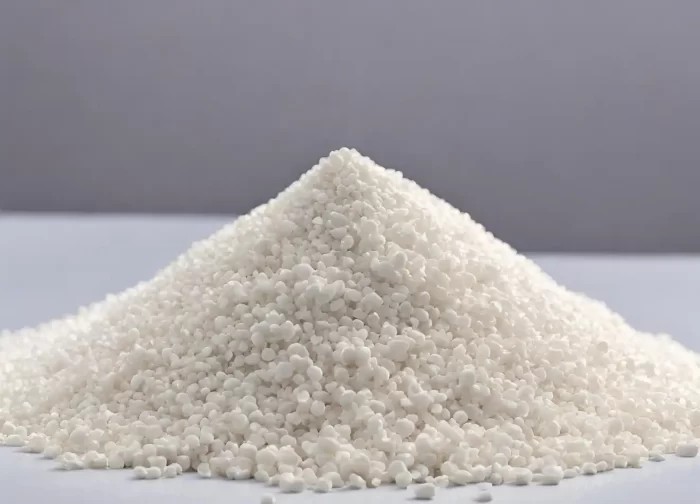
Calcined Alumina Supplier
At ActivatedChem, we take immense pride in being your trusted source for premium-quality calcined alumina. As leading suppliers in the industry, we prioritize excellence in every aspect of our offerings. Our calcined alumina stands out for its unparalleled purity, precisely controlled particle size, and exceptional thermal stability.
What sets ActivatedChem apart is our unwavering commitment to delivering products that meet the highest standards of quality and performance. With a customer-centric approach, we understand the unique needs of your industry and offer tailored solutions to enhance your processes.
Partnering with us means gaining access to a reliable supply chain, cutting-edge technology, and a team dedicated to your success. Choose ActivatedChem for calcined alumina that not only meets but exceeds your expectations, ensuring efficiency and excellence in every application.
Conclusion
Calcined alumina stands as a versatile and indispensable material with a myriad of applications across various industries.
Through the process of calcination, alumina transforms, acquiring enhanced properties such as increased hardness, thermal stability, and chemical inertness.
These attributes make calcined alumina a key component in the production of advanced ceramics, abrasives, refractories, and catalysts.
